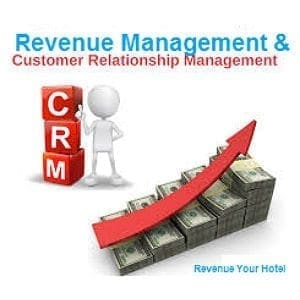 Hoteliers have a lot of room to improve in 2016 when it comes to converting direct online traffic.
Hoteliers have a lot of room to improve in 2016 when it comes to converting direct online traffic.
In an effort to avoid paying online travel agent commissions of 20 percent or more, hotel marketing teams are increasingly investing in digital advertising campaigns to drive traffic directly to their sites. While attracting more unique monthly visitors is a necessary step for hotels looking to increase direct online bookings, the average abandonment rate for hotel sites is a whopping 77 percent! Needless to say, too much traffic isn’t converting.
Marketers often shrug their shoulders at this statistic, arguing that high quantities of lost customers are part of the travel business. Their reasoning goes something like this: It’s well known that people check close to 40 different sites on average over a 6-week period before booking their trip. Whether consumers end up picking one hotel over another is based on factors largely out of a marketer’s control.
Making a sale to every visitor that arrives at a hotel site is certainly a less than realistic goal. Still, this type of reasoning is counterproductive. Even the smallest marketing improvements geared towards increasing conversions can have substantial impacts on a hotel’s bottom line.
Having worked with hundreds of hotels worldwide, it’s clear that hotel marketers can almost always do more to both decrease the number of customers who leave their site before purchasing, and increase the effectiveness of their campaigns to re-engage abandoned visitors. Here are five specific areas where hoteliers have the most opportunity to improve conversions through their direct online sales channel:
1. Be upfront about hidden costs, and don’t get greedy with the administration fees!
When a customer not only visits your hotel site, but gets to the final steps of booking, the last thing you want to do is aggravate them with surprise fees. I still see far too many hotels add substantial extra changes at the very end of the purchase process.
Be upfront with the customer early on about the total cost of their booking, and only make extra charges that are absolutely necessary! Items like foreign taxes are unavoidable, but you can do without billing for “administration fees” and miscellaneous “booking charges.”
If a potential customer leaves your site, the next place she will likely go is an OTA to explore better deals. Foregoing the revenue from optional extra charges can help you avoid losing the business to a competitive hotel.
2. Make sure the message and content you’re showing is seasonally appropriate
Many hotels, particularly smaller ones, don’t properly update the marketing content on their sites to reflect seasonal changes. If you’re a ski resort, and people are looking to book a winter vacation, offering them a free ski pass promotion with a one-week booking can help sweeten the deal. But this same promotion will not make any sense to a customer if it’s offered during summer months.
Update the messaging on your site regularly to ensure it’s seasonally appropriate. If customers feel like the site content is irrelevant or just doesn’t make sense, they will be more likely to get confused and continue their hotel search elsewhere.
3. Use on-site re-engagement notifications to highlight existing information the customer might have missed
Don’t let a customer leave your site without serving an overlay message, set to appear automatically when a visitor has been on one page for a certain period of time, tries to close the browser window, or takes another action that signals pending abandonment.
Serving an online re-engagement message can result in a recovered booking 15 percent of the time on average. While this statistic is certainly encouraging, hotel marketers can beat the average by ensuring that their overlay content is clear and persuasive.
For the onsite re-engagement messaging, do more than just state you’re sorry to see the person go and offer assistance in helping them complete the booking. Try to draw them in with an added amenity, like free breakfast or a bottle of wine. You can also highlight existing discount information that the visitor might have missed on your site. For instance, if your hotel has a long-standing promotion where a guest gets a discount if they stay for more than three nights, mention it in your onsite re-engagement message.
4. Don’t oversaturate your abandoned visitors with display ads
In 2016, marketers will continue spending on display advertising to try to bring back lost customers. While ad re-targeting is certainly worthwhile, marketers can get smarter about the frequency and timing of these ads. Don’t be the hotel that serves a lost customer 10 ads per day over a three-month period after they’ve left your site. It hurts, not helps, your brand.
In addition to paying attention to the frequency with which you serve re-targeting ads, make sure these ads feature content that encourages the customer to come back and complete their booking. Instead of featuring an ad that includes a picture of your hotel and passive messaging such as, “Stay with us this winter,” include something in the ad that indicates you know the customer is in the middle of the booking process. Active language such as, “Complete your booking now and receive a complimentary breakfast from room service!” could help you encourage more people to return and finish their purchase.
5. Email re-market with exclusive offers
If you’re a hotel who is not doing email re-engagement campaigns, you’re leaving a lot of money on the table.
Email remarketing remains an incredibly effective marketing channel for offering exclusive hotel deals to lost customers. Up to 61 percent of customers open a follow-up email from hotels, and the click-to-book rating is a staggering 42 percent.
The most successful re-engagement emails focus on a common theme: discounts. Particularly if you’re looking to fill rooms that would likely stay empty otherwise, but want to avoid giving too much business to OTAs, consider passing along more substantial discounts to customers. If you’re not quite as eager to fill rooms, smaller value-adds such as a free bottle of wine or a length-of-stay discount can be incredibly effective in attracting abandoned visitors.
As the travel space becomes more digitally savvy, a hotel’s success in winning guests from competitors and increasing direct online conversions will ultimately come down to the effectiveness of its online marketing team. The marketers who are always looking for ways to ensure that customers have truly great online experiences, and do everything possible to ensure their hotel stays top of mind throughout a traveler’s decision-making process, will consistently win the battle for bookings in 2016.
Katie Colangelo is director of business development at Ve Interactive , where she leads the company’s travel industry practice. Prior to joining Ve, Colangelo managed U.S. luxury hotel partnerships for Jetsetter.
, where she leads the company’s travel industry practice. Prior to joining Ve, Colangelo managed U.S. luxury hotel partnerships for Jetsetter.



















